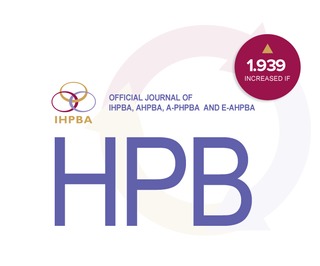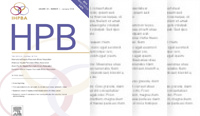International Hepato-Pancreato-Biliary Association
HPB Blog, May 2014

The May edition of HPB features a number of important articles typically covering wide-ranging fields of liver pancreas and biliary surgery. A review article is presented defining pathophysiological changes following liver resection and the evidence for our ability to influence and modify these changes therapeutically. In addition there is a systematic review and meta-analysis looking at the evidence for laparoscopic and open approaches to resection of neuroendocrine tumours in the pancreas.
In terms of original articles, the list is headed by a new approach to developing a concept check-list for laparoscopic cholecystectomy in the hope of providing standard approaches to display the critical view of the cystic duct and Calot’s triangle. It is hoped that introduction of such a check list may reduce the chance of bile duct injury which is believed to occur most commonly because of anatomical confusion and loss of situational awareness. The group from Leeds, UK continues the theme of approaches to gall bladder disease, in a large review of xanthogranulomatous cholecystitis. This study shows geographical variation globally both in incidence of this rare form of cholecystitis and of gall bladder cancer associated with it.
The role of Ca19.9 as a determinant of outcome in patients with pancreatic cancer receiving neoadjuvant chemotherapy was the subject of an interesting paper from the MD Anderson Cancer Centre Houston, Texas. This study demonstrates that chemotherapy associated reductions in Ca19.9 predict better survival in patients who go on to have surgery and even in those who do not. Biomarker prediction of outcomes may assist prognostication and rationalization of approaches to cancer care.
Liver surgery is covered in a number of important papers. A detailed volumetric analysis of segments of the liver is presented by a group from Tokyo which confirms segment 8 as the largest liver section but importantly shows that there are significant variations in volume not just between the segments in an individual liver but also between the same segments in different individual patients. The influence of delays in working up cholangiocarcinomas on outcomes of liver surgery was the subject of a paper from Amsterdam and this showed that although there were often lengthy delays in preparing patients with hilar cholangiocarcinoma for surgery this did not appear to influence outcome of resection negatively. A separate paper looked at the influence of age on outcomes form liver resection in a large series from North America.
A further study looked at outcomes of patients in Toronto with initially non-resectable liver metastases who were down sized with chemotherapy to a point where surgery was possible. The overall survival rates were very encouraging in this series although progression free survival was reduced with many patients developing recurrent cancer.
Other articles addressed laparoscopic liver surgery and portosystemic shunt surgery. The high standard and clinical relevance of the articles published by HPB continues to make this a must-read publication for our specialty.
To view the table of contents of this issue, click here
SJ Wigmore
Corporate Partners
If you are interested in becoming a Corporate Partner of the IHBPA please contact industry@ihpba.org
Find out more


